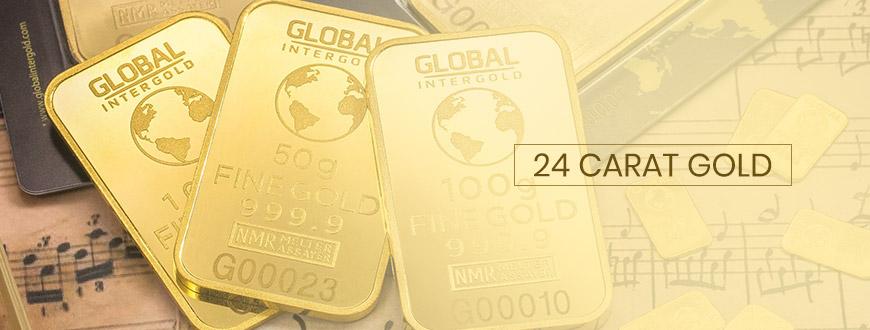Kalyan Wiki

24 Karat Gold
Karat is a measure that indicates the purity or fineness of precious metals. The fineness of a precious metal shows the weight of the fine metal in an alloy. Alloying various metals with precious metals like gold improves their physical properties and makes alterations in colour.
Karat is a measure indicated on a scale of 0 to 24 and denoted using the letter ‘k’. The most common karat measurement levels are 10k, 14k, 18k, 22k and 24k. The purest and expensive form of gold used in jewellery is the 24 karat gold. This form of gold contains 24 parts of gold and zero parts of alloy metal.
According to the millesimal fineness system, the number ‘999’ denotes 24 karat gold, which means that the metal is 99.9% pure. We can see such millesimal values stamped on ornaments made of precious metals like gold, silver and platinum. But in the case of gold, we often say its purity in terms of karat. So, in general, in terms of gold, karat is a measure of the ratio of gold to other metals in the alloy.
The hallmark certification on a gold coin or bar ensures its purity. 24k fine gold will have either the 24k mark or the 999 gold hallmark on it. The mark acts as a token of trust for the customers in choosing fine metal.
The 24k version of gold is present in a bright yellow colour, which is brighter than the other versions. It features a deep yellow colour with a very bright lustre. Gold bars of lesser karats like 14k and 18 have enhanced physical properties, but the process of alloying can impact their colour tone and brightness.
24 karat gold is soft and delicate, so it is not perfectly suited for making jewellery items. This version of gold can easily deform or bend, so it is not so popular among engagement rings or wedding jewels. However, looking for investment options can go for 24k gold since the gold is 99% pure.







